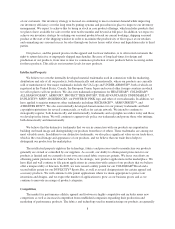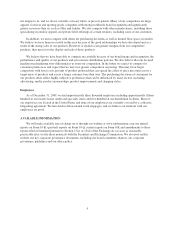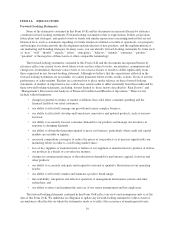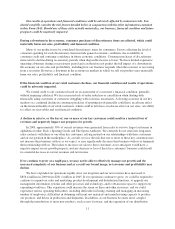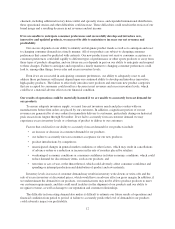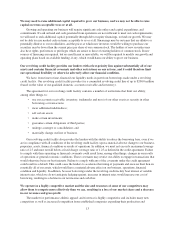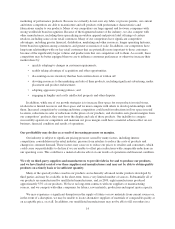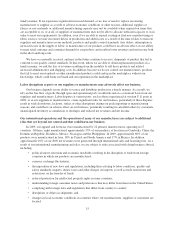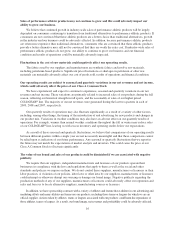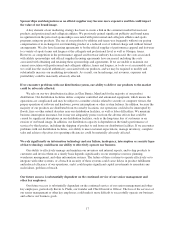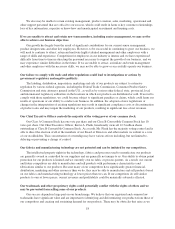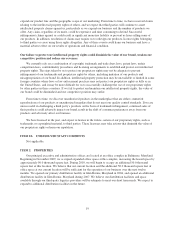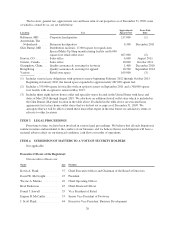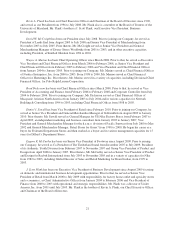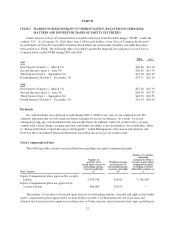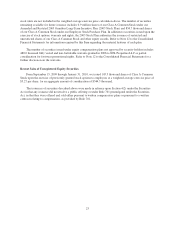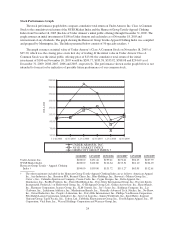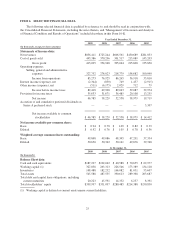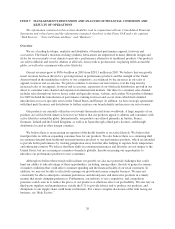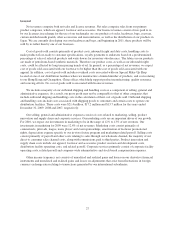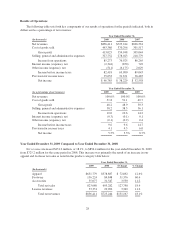Under Armour 2009 Annual Report Download - page 26
Download and view the complete annual report
Please find page 26 of the 2009 Under Armour annual report below. You can navigate through the pages in the report by either clicking on the pages listed below, or by using the keyword search tool below to find specific information within the annual report.We also may be unable to retain existing management, product creation, sales, marketing, operational and
other support personnel that are critical to our success, which could result in harm to key customer relationships,
loss of key information, expertise or know-how and unanticipated recruitment and training costs.
If we are unable to attract and retain new team members, including senior management, we may not be
able to achieve our business objectives.
Our growth has largely been the result of significant contributions by our current senior management,
product design teams and other key employees. However, to be successful in continuing to grow our business, we
will need to continue to attract, retain and motivate highly talented management and other employees with a
range of skills and experience. Competition for employees in our industry is intense and we have experienced
difficulty from time to time in attracting the personnel necessary to support the growth of our business, and we
may experience similar difficulties in the future. If we are unable to attract, assimilate and retain management
and other employees with the necessary skills, we may not be able to grow or successfully operate our business.
Our failure to comply with trade and other regulations could lead to investigations or actions by
government regulators and negative publicity.
The labeling, distribution, importation, marketing and sale of our products are subject to extensive
regulation by various federal agencies, including the Federal Trade Commission, Consumer Product Safety
Commission and state attorneys general in the U.S., as well as by various other federal, state, provincial, local
and international regulatory authorities in the locations in which our products are distributed or sold. If we fail to
comply with those regulations, we could become subject to significant penalties or claims, which could harm our
results of operations or our ability to conduct our business. In addition, the adoption of new regulations or
changes in the interpretation of existing regulations may result in significant compliance costs or discontinuation
of product sales and may impair the marketing of our products, resulting in significant loss of net revenues.
Our Chief Executive Officer controls the majority of the voting power of our common stock.
Our Class A Common Stock has one vote per share and our Class B Convertible Common Stock has 10
votes per share. Our Chief Executive Officer, Kevin A. Plank, beneficially owns all 12.5 million shares
outstanding of Class B Convertible Common Stock. As a result, Mr. Plank has the majority voting control and is
able to direct the election of all of the members of our Board of Directors and other matters we submit to a vote
of our stockholders. This concentration of ownership may have various effects including, but not limited to,
delaying or preventing a change of control.
Our fabrics and manufacturing technology are not patented and can be imitated by our competitors.
The intellectual property rights in the technology, fabrics and processes used to manufacture our products
are generally owned or controlled by our suppliers and are generally not unique to us. Our ability to obtain patent
protection for our products is limited and we currently own no fabric or process patents. As a result, our current
and future competitors are able to manufacture and sell products with performance characteristics and
fabrications similar to our products. Because many of our competitors have significantly greater financial,
distribution, marketing and other resources than we do, they may be able to manufacture and sell products based
on our fabrics and manufacturing technology at lower prices than we can. If our competitors do sell similar
products to ours at lower prices, our net revenues and profitability could be materially adversely affected.
Our trademark and other proprietary rights could potentially conflict with the rights of others and we
may be prevented from selling some of our products.
Our success depends in large part on our brand image. We believe that our registered and common law
trademarks have significant value and are important to identifying and differentiating our products from those of
our competitors and creating and sustaining demand for our products. There may be obstacles that arise as we
18


